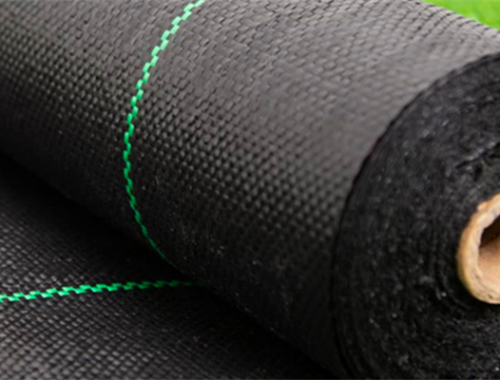One of the First Female Alpinists Was a Victorian Lady
Badass Women Chronicles
One of the First Female Alpinists Was a Victorian Lady
Lucy Walker was the first woman to summit the Matterhorn and the Eiger—in a billowing dress—but she nearly vanished from history
Jul 31, 2018
Jul 31, 2018
Lucy Walker was the first woman to summit the Matterhorn and the Eiger—in a billowing dress—but she nearly vanished from history
Nineteenth-century alpinist Lucy Walker left behind no diaries, newspaper interviews, or personal accounts of any kind, but her presence haunts the annals of early mountaineering like a persistent ghost. Her serene, inscrutable face stares out from among men in Victorian-era expedition photos, and she lurks in a doorway in a renowned engraving of top 19th-century alpinists—all male except for her. In journals, male climbers describe sightings of Walker briefly drying her sodden clothes at a hut or moving fast through deep snow and the astonishment of villagers after she became the first woman to climb the Eiger.
Walker was one of the first and most prolific female mountaineers of the 19th century. Over the course of her 21-year career in the Alps, starting in 1858, Walker undertook 98 expeditions, including 28 successful attempts on 4,000-meter peaks. She holds first female ascents on 16 summits, including Monte Rosa, the Strahlhorn, and the Grand Combin, and a first ascent for either sex on the Balmhorn, which she completed in 1864.
But it was perhaps the Matterhorn ascent that gained her the most fame. Long before dawn on July 21, 1871, Walker woke up in a hut on the northeastern flank of the legendary mountain, surrounded by men. She wore her favorite long dress and hobnail boots as she, her father, their guide, and several other climbers set off on snowy slopes in the flickering gloom of candle lanterns.
The mountaineers were probably nervously aware that six years earlier, four men from the first expedition to stand on top of this 14,692-foot spire on the Swiss-Italian border fell and perished on their descent. Walker, a 35-year-old Brit, also knew that American alpinist Meta Brevoort aimed to be the first woman to reach the summit within a few days, and Walker intended to beat her to it.
As the sky brightened and smoke rose from breakfast fires in the village of Zermatt far below, the climbers ascended a skinny, ice-encrusted ridge with heart-palpitating exposure. One mindless step could have sent them plunging a thousand feet down to the valley below. But by midmorning, with willful determination and agreeable weather, they reached the summit. A tableau of rocky pinnacles, meadows, forests, streams, and villages unfurled in every direction—and Walker was the first woman ever to see it all from that iconic perch.
“She was the person that made women visible in the Alps for the first time,” says Clare Roche, a British mountaineering historian. “She was the first woman to ascend most of the major alpine summits and crushed through the glass ceiling, making it easier for women to follow.” And yet the details of Walker’s life remain largely unknown.
At the time, women were expected to stay out of the public eye, avoid celebrating their accomplishments, and conform to narrow notions of femininity that prized meekness and subservience. While newspapers glorified male exploits in the mountains, they often ignored or satirized women who climbed, painting them as weak and unfit—or sometimes just laughable eccentrics. Women mountaineers of the 19th century generally underplayed their accomplishments in letters and books so as not to appear unfeminine and risk ridicule. Many did not write about their expeditions at all. Walker might have kept quiet about her climbing so that she could continue doing it in peace, but she also didn’t let the inevitable jibes discourage her.
“In those far-off mid-Victorian days, when it was even considered ‘fast’ for a young lady to ride in a hansom, Miss Walker’s wonderful feats in the mountains did not pass without a certain amount of criticism, which her keen sense of humor made her appreciate as much as anyone,” wrote Frederick Gardiner, a friend and mountaineer who climbed alongside Walker up the Matterhorn, in an obituary in the Alpine Journal in 1917.
Over the course of her climbing career, Walker proved herself a model of both skill and endurance, climbing mostly with her father and brother and possibly, as some scholars have suggested, outperforming them. She ascended the tallest technical peaks in Europe, braved spectacular exposure with unreliable ropes, and pioneered long, difficult routes through the high cols. According to friends who wrote about her, Walker was witty and lively and had a penchant for hydrating with champagne.
She also went to great lengths to avoid offending delicate Victorian sensibilities and gender roles—at least until out of sight. While climbing, Walker would walk out of villages looking every bit the proper lady and then stash her petticoat behind a rock. Like a chameleon, she transformed from an elite athlete in the Alps to a prim Victorian Englishwoman at home in Liverpool, where her family ran a lead-dealing business. Walker tended to the family house; kept up with her needlework; read widely in French, German, and Italian; and hosted parties. (She chose not to marry, however, which would have been unusual at the time.) There are no records of her ever scaling a British peak or even partaking in any exercise more taxing than croquet.
Perhaps because she didn’t brazenly challenge social norms, Lucy Walker’s activities in the mountains were occasionally feted. International newspapers covered her Matterhorn climb, and the English magazine Punch even published a poem celebrating her fortitude.
“No glacier can baffle, no precipice balk her,” it read. “No peak rise above her, however sublime. Give three cheers for intrepid Miss Walker. I say, my boys, doesn’t she know how to climb!”
In her definitive 2015 dissertation on 19th-century women’s mountaineering, Roche argues that this recognition likely encouraged other women to be more adventurous in the Alps. Katherine Richardson, Margaret Jackson, and Emily Hornby, three of the best women mountaineers of the late 19th century, started climbing within a couple years of Walker’s Matterhorn ascent. Meta Brevoort was also inspired by her example, according to her nephew and climbing partner.
Even before that time, however, Walker was far from the only woman in the peaks. After examining historic führerbücher, books in which guides kept client testimonials, Roche discovered that from about the mid-1860s, women ventured into the mountains on technical expeditions in much greater numbers than previously thought. In the second half of the 19th century, women completed nearly 60 first ascents on Europe’s high peaks and more than 100 first female ascents. These include Brevoort’s first winter ascent of the Jungfrau in 1874 and Margaret Anne Jackson’s first ascent of the east face of Weissmies in 1876.
“The stories of women just weren’t written, so people tend to think they didn’t happen,” says Rebecca A. Brown, author of Women on High: Pioneers of Mountaineering. “There have always been women who have had the courage to step out into the unknown, and that’s what Lucy Walker did. The fortitude, the bravery, the commitment to the goal—women’s power was not invented yesterday.”
Letters suggest that while there were rivalries, women climbers also formed a sort of sisterhood in the mountains and helped each other out, Roche says. Even though women weren’t allowed to file papers in the Alpine Journal until 1889 and were excluded from the Alpine Club until 1974, some of their male counterparts welcomed them in the high country. These wild areas afforded rare freedom in a time of stifling social constraints. In coed expeditions, women climbed and slept alongside men, a practice that would have been unthinkable in the valleys and cities. In the late 1800s, women even led men on expeditions without guides, which had been customary earlier in the century.
Walker continued to climb until her mid-forties, when a doctor advised her to stop for health reasons that are now unknown. She continued to walk in the Alps long after her climbing career and acted as a mentor to younger climbers, encouraging them to write about their experiences. In 1907, Walker was involved in founding the Ladies Alpine Club and acted as its second president before she died, in September 1917, at 81.
But in the century since her death, Walker has nearly vanished from the public record. How many other women quietly pulled off great feats of athleticism but fell through the cracks of history without so much as a whisper? Walker at least lives on in the words of those who knew her.
“Her energies were immense and she was a bold, inveterate and able sightseer,” wrote mountaineer Charles Pilkington in the Alpine Journal after Walker died. “We were often roused by her from our laziness and taken to some point of view or interesting place, which but for her insistence, we might have missed. Traveling in her company was always enlightened by her great vivacity.”
You May Also Like

FACTORS AFFECTING THE SERVICE LIFE OF GEOTEXTILES: DURABILITY AND MAINTENANCE
December 9, 2024
WHY ELECTRIC TRICYCLES FROM CHINA ARE TRANSFORMING GLOBAL TRANSPORTATION: A GUIDE TO CHOOSING THE BEST MODEL
December 31, 2024